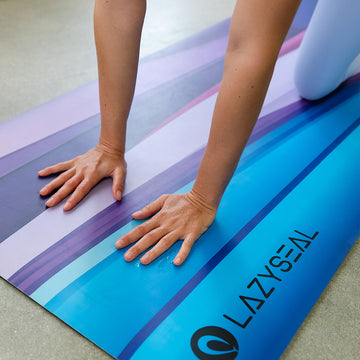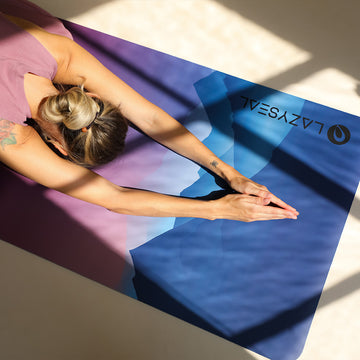5 Important Facts About Joint Discomfort in Yoga Every Woman Over 50 Should Know
And How to Keep Your Joints Feeling Their Best.
[Read below for details]
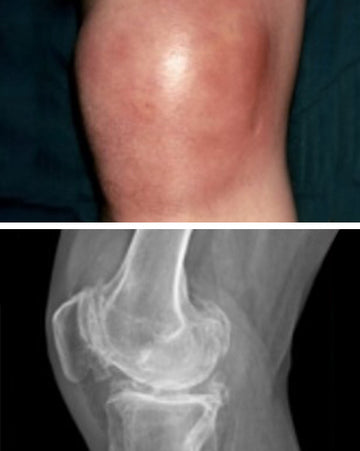
If you’ve noticed your knees feeling stiff, your wrists aching after certain poses, or soreness lingering longer than it used to—you’re not alone.
For many women over 50, joint discomfort during or after yoga is more common than they expect. While yoga is known for improving flexibility and strength, certain factors may put more strain on your joints than you realize.
Here’s what every woman over 50 should know about joint health—and how to make sure yoga stays comfortable and supportive for your body.
Warning #1: Joint Discomfort Can Be a Sign of Increased Strain
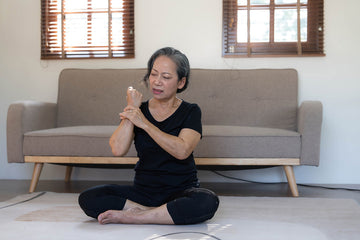
If you feel discomfort in your knees, wrists, hips, or hands, it’s not just an inconvenience—it may be a sign that your joints aren’t getting the support they need.
🛑 Joint sensitivity can increase with age due to changes in cartilage and muscle support.
🛑 Poor alignment or lack of cushioning may contribute to discomfort over time.
🛑 Ignoring early signs of strain can make certain movements feel more challenging.
At first, it may just be mild stiffness… but over time, discomfort may make everyday movements feel more difficult.
👉 Kneeling during yoga feels uncomfortable.
👉 Holding poses like Downward Dog puts pressure on your wrists.
👉 Transitions between poses don’t feel as smooth as they used to.
The good news? Small adjustments can make a big difference.
Warning #2: Joint Stiffness Can Develop Gradually—Without You Noticing
Many women believe that joint discomfort is just part of getting older. But the reality is:
👉 Changes in joint mobility can develop gradually, sometimes without noticeable symptoms at first.
👉 Stiffness in the morning or after periods of inactivity may indicate your joints need more movement and support.
👉 Regular, mindful movement is key to keeping joints feeling their best.
One of the biggest factors? Inactivity.
When joints don’t get enough movement, they may become stiff, weak, or less flexible over time. That’s why staying active—while also giving your joints the right support—is so important.
Warning #3: Yoga Can Be One of the Best Ways to Maintain Joint Mobility—But Only If Done Right
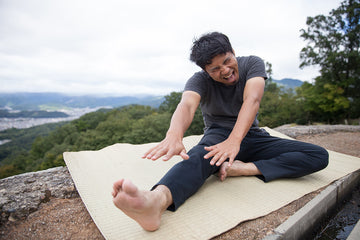
Experts agree: Yoga is one of the most effective ways to support joint flexibility and strength.
📌 Research shows that yoga may help improve joint mobility and overall comfort.
📌 Some studies suggest yoga can play a role in reducing stiffness and supporting balance.
📌 The Arthritis Foundation encourages yoga for building strength around joints.
BUT… what most people don’t realize is that certain factors—like the surface you practice on—can impact how yoga feels on your joints.
❌ Mats that are too thin offer little cushioning, increasing pressure on sensitive areas.
❌ Mats that are too soft compress too much, making stability harder to maintain.
❌ Slippery mats can affect balance and alignment, increasing strain on wrists, knees, and hips.
Instead of supporting your body, the wrong surface may contribute to joint discomfort—making yoga feel harder than it should be.
So what’s the best way to support your joints and keep yoga as comfortable as possible?
Warning #4: Waiting Too Long Could Cost You Your Mobility
The biggest mistake women make? Ignoring joint discomfort until it’s too late.
📌 Arthritis is a common condition affecting millions of adults, contributing to mobility challenges.
📌 Studies indicate that nearly half of women over 50 may experience osteoarthritis in their lifetime.
📌 By age 65, many women report increased joint stiffness, making it important to focus on long-term joint comfort.
The good news? Taking steps to support your joints can help you stay active and continue doing the activities you love—whether it’s yoga, walking, or playing with grandkids.
Warning #5: The Wrong Support Can Put Unnecessary Strain on Your Joints
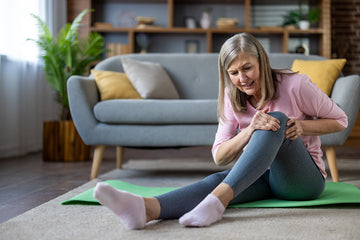
Many women assume all yoga mats provide the same level of support, but if you're over 50 and experiencing joint discomfort, the surface you practice on can significantly impact your experience.
✔ A firm, unforgiving surface may increase pressure on sensitive joints, making movements feel more uncomfortable.
✔ Mats that are too soft can cause instability, affecting balance and alignment.
✔ Slippery materials may increase strain by forcing your muscles and joints to compensate for lack of grip.
At this point, many women start wondering if yoga is even safe for their joints.
And that’s the real challenge—avoiding movement altogether can contribute to even more stiffness and discomfort over time.
But what if the issue wasn’t yoga itself?
What if the real problem was the surface you were practicing on?
What if We Tell You That There is One Yoga Solution That Changes It All?
Most yoga injuries don’t happen because of the poses—they happen because of the surface you’re practicing on.

🛑 Too thin? Your knees and wrists absorb the impact, leading to pain.
🛑 Too soft? Your body lacks stability, increasing strain on your joints.
🛑 Too slippery? Your muscles overcompensate, leading to stiffness and inflammation.
One Extra Joint Support Yoga Mat is built to solve joint pain with routine yoga exercises
Why More Women Are Choosing Lazyseal Yoga Mats

Unlike standard yoga mats, LazySeal is designed for keeping you supported without pain, instability, or strain.
🔹 Joint-Supporting Cushioning – Just the right amount of thickness to protect sensitive joints while keeping you stable in every pose.
🔹 Sweat-Resistant, Non-Slip Surface – Prevents hands and feet from sliding, reducing strain and improving alignment.
🔹 Long-Lasting Support – Made with eco-friendly PU and natural rubber, LazySeal doesn’t break down like cheap foam mats.
With the right support, you can practice yoga without discomfort—so you can stay active, mobile, and strong for years to come.


Give Your Joints the Support They Need Today!
For a limited time, we’re offering 34% OFF the Lazyseal Yoga Mat.
✅ Recommended for women 50+
✅ Designed for pain-free yoga & stretching
✅ Perfect for anyone with knee, wrist, or arthritis pain
Don’t wait until arthritis takes away your mobility. Give your joints the support they need—starting today.
